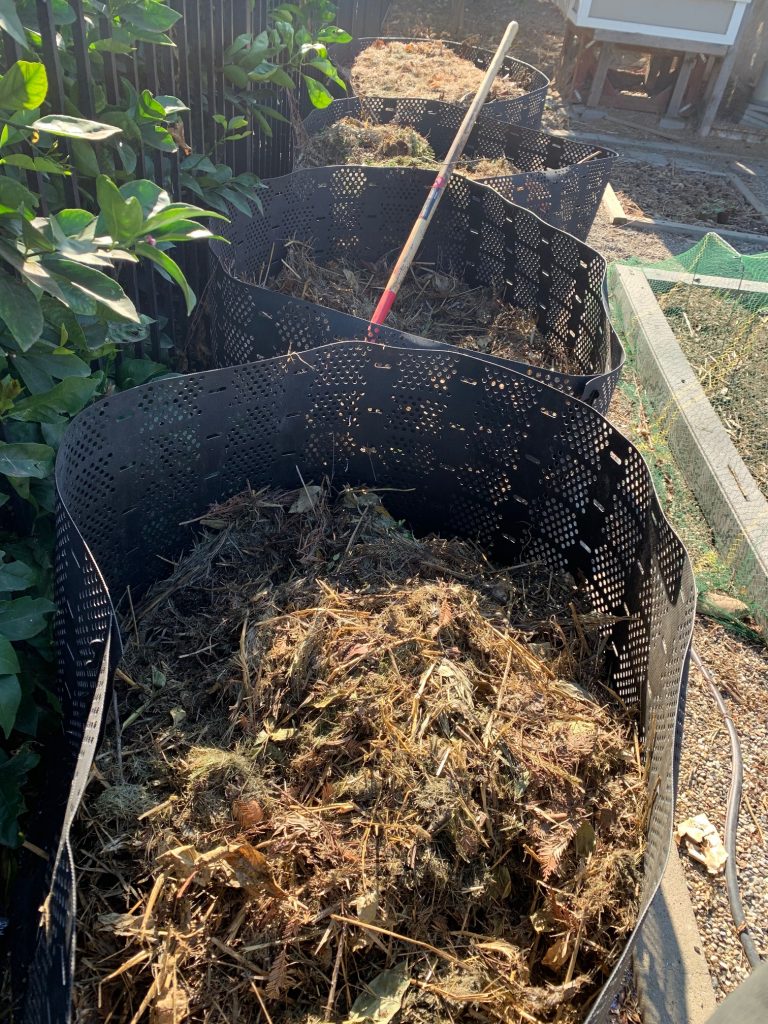
What does Composting Mean?
I share some select product recommendations and this page contains affiliate links. If you take action (click on the link and purchase the product), I will earn some loose change. I hope you take advantage of my recommendations. You do not pay a higher price.
Try a greener lifestyle by incorporating composting DIY techniques into your gardening routine. You can turn kitchen and garden scraps into nutrient-rich soil. You can practice composting at your home and experiment with the process, perfecting it to get that perfect soil. Another way of referring to composting is “recycling of organic waste.”
Composting is the activity of making compost. What is compost? Essentially, it is humus. Humus is defined as the dark organic matter formed by the decomposition of plants and animals. The finished compost resembles humus as we break down the plant parts.
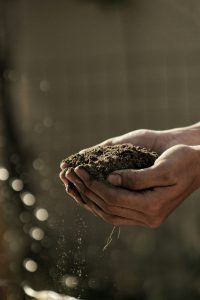
By adding humus to your garden, you add a slow-release fertilizer, supplying nutrients to your plants over time. You also improve the soil structure to help with water and nutrient retention, ensure sufficient aeration, and help with drainage. The humus adds nutrients to the soil that can be accessed by plants.
I use my compost pretty much everywhere in my yard. I use it heavily in my vegetable beds, adding several inches on top of my raised-beds every year. As I strive to avoid rototilling, the humus will just sit on top of my garden beds while things last over the winter. I also add it to my orchard, and anywhere I feel I need better soil.
Recycling of organic waste is the practice of breaking down organic matter into usable soil. It goes hand in hand with all sorts of gardening, general yard work, and even cooking. As one participates in gardening, cleaning up leaves, trimming bushes, and mowing your lawn, you generate organic matter, providing ingredients for your compost. It is also possible to compost items found in your house, including coffee grounds, shredded paper, produce, excess vegetables and fruits, etc.
Once a composter, always a composter! For example, before discarding items, you can assess every item generated in your garden and house for potential ingredients for your pile. You will not look at your yard the same way again. I’ve been known to get crazy with composting and develop multiple piles in stages. Alternatively, you can go the minimal route and just make a small pile in the corner of your yard.
Recycling organic waste is an organic thing to do! It breaks down organic matter that would otherwise be disposed of into usable soil and provides a valuable soil additive and a means to improve your soil. Thus, you will need to purchase less bagged soil for your garden and potentially fewer synthetic fertilizers. It is a win-win.
Composting DIY: How to Compost
To make nutrient-rich soil, you need nitrogen, carbon, air, and water. To get your nitrogen and carbon, you must try to balance roughly equal parts of green and brown. Some materials have differing levels of carbon, and it is not worth tracking this closely, in my opinion. Simply strive for equal brown and green. For example, mix brown leaves with grass clippings. Of course, if you mix these together, you will get better results. I simply add items as they become available in my kitchen and yard.
Sometimes, I will have more green than brown and vice versa, but it seems to even out eventually when I turn the pile. In addition, if you have a way of reducing the size of your pieces of ingredients, it will speed up the development of compost. For example, I almost always try to get my leaves off the lawn and chop them up with the lawnmower before I put them in the pile. I also run trimmings through a shredder at times to reduce matter. You also need to ensure there is sufficient water.
Your pile should be like a moist sponge. Not soaking wet, but damp. Air is also a necessary ingredient, and this is why composters turn their piles to introduce air. You can still get to the end result if you don’t turn the pile. It just takes longer. One note: if you’ve recently applied pesticides or chemicals to your lawns, fruit trees, or any of the items you are discarding, it is advisable to skip placing them in the pile.
The Process
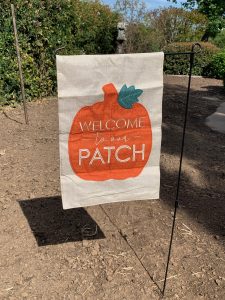
What actually happens, and how is humus actually made? The work is done primarily by bacteria. Once you get your pile established, low-temperature bacteria get to work breaking things down. These bacteria, called psychrophiles, do best at temperatures of approximately 55 degrees Fahrenheit (ca. 13 °C); however, they can even decompose at temperatures below this.
This is good news, as you know your pile has already been worked on before it warms up. If you have enough psychrophilic bacteria in your pile, the center of it will start to warm up. Once this happens, the mesophiles begin to do their work. They prefer temperatures between 68 degrees Fahrenheit (ca. 20 °C) and 86 degrees Fahrenheit (ca. 30 °C).
Following this, the heat-loving, thermophilic bacteria take over your pile. Other things will show up in your compost pile, such as fungi, nematodes, various types of spiders, centipedes, beetles, slugs, snails, and various worms. All of these are responsible for breaking down your compost. It is truly remarkable how this happens.
This is where I will remind you that the size of your pile matters. Yes, size matters. I find I need to use a fairly large pile in order for it to retain heat. I have better success with larger piles. I suggest at least three feet (0.91 m) by three feet (0.91 m). These guys will generate a lot of heat.
It is not uncommon for my piles to get over 170 degrees Fahrenheit (ca. 77 °C) at the peak. This will kill all those nasty seeds from weeds and other things that you don’t want in your future soil. Keeping the temperatures high will help reduce the amount of time it takes for your humus to develop.
Compost Bin Tool and Materials
Composting is an eco-friendly and cost-effective way to recycle organic waste and create excellent soil for your garden. You don’t need fancy equipment or expensive materials to start; in fact, it can be done quite cheaply with some basic understanding and a bit of creativity. For example, you can make your own bin, and all of the materials you add to the pile come from around your home.
I tend to purchase some low-cost materials to make it easier and help from an appearance perspective. I share these things below.
Composting Kitchen Bin
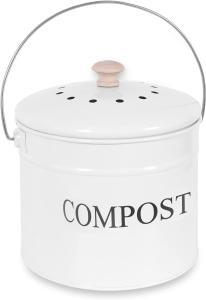
Finding something to carry your kitchen scraps to the pile is helpful and a lot of what would work best for you depends on your situation. If you have plenty of space under the sink for example, you could store a container in that location and only remove it when you need to dump it in your pile.
Or maybe your counter has lots of space? Understand that it is not practical to just walk to the pile every time you have something for it. You will be going out the kitchen door constantly!
Because you will be putting things in your kitchen pile frequently and many of the items will create odors, this bin should be carefully considered. I have been feeding a pile in my backyard for many years and I have several suggestions for those with lots of space and those with a little. I have used everything from plastic tubs to fancy containers. My best recommendation is the simple and inexpensive Candco Compost Bin. The Candco is inexpensive, durable, and it comes with a odor filter.
Bins
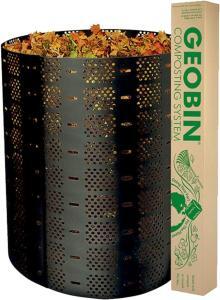
Using a bin offers several advantages over a “naked” pile. Bins help contain the material, preventing it from spreading and providing a neater appearance in the garden. Bins also allow for better temperature and moisture control, promoting efficient decomposition and reducing the chances of pests, while still offering a convenient and organized way to collect and manage compostable materials.
I have created compost with just a pile and no bin, used fancy rotating bins, and constructed bins from pallets and chicken wire. There are many bin choices and they range greatly in price. I have learned it is best to avoid metal parts as they will eventually rust. Try for all plastic for durability. Rotating bins can be efficient and create humus faster, however, they often don’t have a lot of capacity. If they do have lots of capacity, they will be difficult to turn as humus can get very heavy when it is wet.
My far and above favorite bin is the adjustable GEOBIN. The GEOBIN is expandable up to 246 gallons which is a very large capacity. You can generate lots of heat in a 246 gallon bin. You can put this bin together in five minutes with your hands. It is very inexpensive and has no metal parts. Plus, if you don’t use it, you can roll it up and put it away. I have four of these bins that I use year round. These sell for less than $40.
If you are interested in building your own bins, try Instructables or Practically Functional instructions.
Thermometer
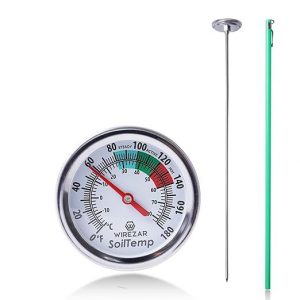
A compost thermometer is a valuable tool for monitoring and managing the process effectively. Breaking down your pile is a biological activity involving microorganisms that break down organic matter. Temperature plays a crucial role in this process. A thermometer allows you to track the internal temperature of your compost pile or bin.
By regularly monitoring the temperature with a compost thermometer, you can ensure that your process is effective, helping you produce nutrient-rich humus for your plants while minimizing potential issues.
Monitoring the temperature helps identify potential issues with your pile. If the temperature is too low, it may indicate that the compost is not breaking down efficiently, while excessively high temperatures may suggest that the pile needs turning or additional moisture.
I use a special thermometer to tell me when it is time to turn the pile, and wether or not the compost is generating heat successfully. Remember high temperatures help kill weed seeds and harmful pathogens, making the finished humus safer for use in gardens. I recommend the long stem Yogyro thermometer. Make sure to get a long stem so that you can reach the inside of your pile.
Compost Starters
Compost starters, also known as compost accelerators or activators, are products designed to enhance and speed up the composting process. They typically contain a mixture of microorganisms, nitrogen-rich materials, and sometimes other additives that promote the decomposition of organic matter in a compost pile or bin. Compost starters can be especially useful when starting a new compost pile or when trying to accelerate the decomposition of specific materials.
These come in liquid or dry form and contain things such as microorganisms, nitrogen and carbon sources, enzymes, and various trace minerals. I typical forgo the accelerators and activators as I don’t seem to have trouble getting my pile to work. If you want to give accelerators a try, I would recommend products with natural ingredients, such as Fishnure 4 pounds Natural Living Compost Starter, Enhancer and Accelerator or Dr. Connie’s Compost Plus, Natural Compost Starter/Accelerator.
Compost Tea Making Equipment
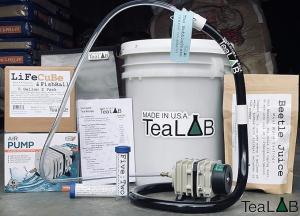
Compost tea is a liquid extract derived from compost that contains beneficial microorganisms, nutrients, and other organic matter. It is created by steeping compost in water, allowing the beneficial components to leach into the liquid.
Compost tea is used as a natural fertilizer and soil conditioner, providing a boost of microbial activity to plants and enhancing soil health. You can make your own compost team making equipment and gather all the ingredients in your garden, or you can purchase all of it. It is up to you!
Compost tea introduces a diverse range of beneficial bacteria, fungi, and other microorganisms to the soil. The tea contains nutrients from the compost, providing an organic and nutrient-rich supplement for plants. Regular use of compost tea can enhance soil structure, water retention, and aeration.
I have seen my plants suddenly make miraculous improvements in their growth and health as a result of using compost tea. I make this tea in large, 30-gallon batches; however, many can get by with 5-gallon batches brewed in commercial tea making set ups. For a great starter set up, try the TeaLAB Compost Tea Brewer Kit.
Any Time is a Good Time to Create Great Soil
Composting can indeed change based on the time of year due to variations in temperature, moisture levels, and the types of materials available. For example, fall is an excellent time to work on your compost for a number of reasons. First, the lawns are still growing, providing greens. In addition, trees are beginning to drop their leaves, producing good browns. This is a good time to mix these two together and add to your pile. It is also cooler, and the piles hold their moisture longer. You still may need to add some water to keep them moist. Last, you don’t die of heatstroke because that fall weather is just perfect for yard work!
Colder temperatures can slow down microbial activity, leading to a slower decomposition process. In addition, piles may freeze, limiting microbial action. Insulating the pile, using smaller particles, or turning the pile more frequently can help maintain decomposition during winter. Winter is also a good time to add the leaves that have fallen.
Warmer temperatures during the summer can accelerate microbial activity, leading to faster composting. However, excessive heat can also dry out the pile. Regular turning, adequate moisture management, and providing shade can help balance the process in summer. I often need to spray my pile with water when I am turning it to ensure moisture levels are adequate.
More Information
Check out my new book, Backyard Big: Growing Food in Your Backyard for more information and other posts in my garden blog such as Ten Reasons why it is Good to Grow Your own Food. I have a chapter all about compost. If you are interested in building your own bin, try searching for topics such as “compost bin tools and materials” or “how to build the compost bin you need.”
